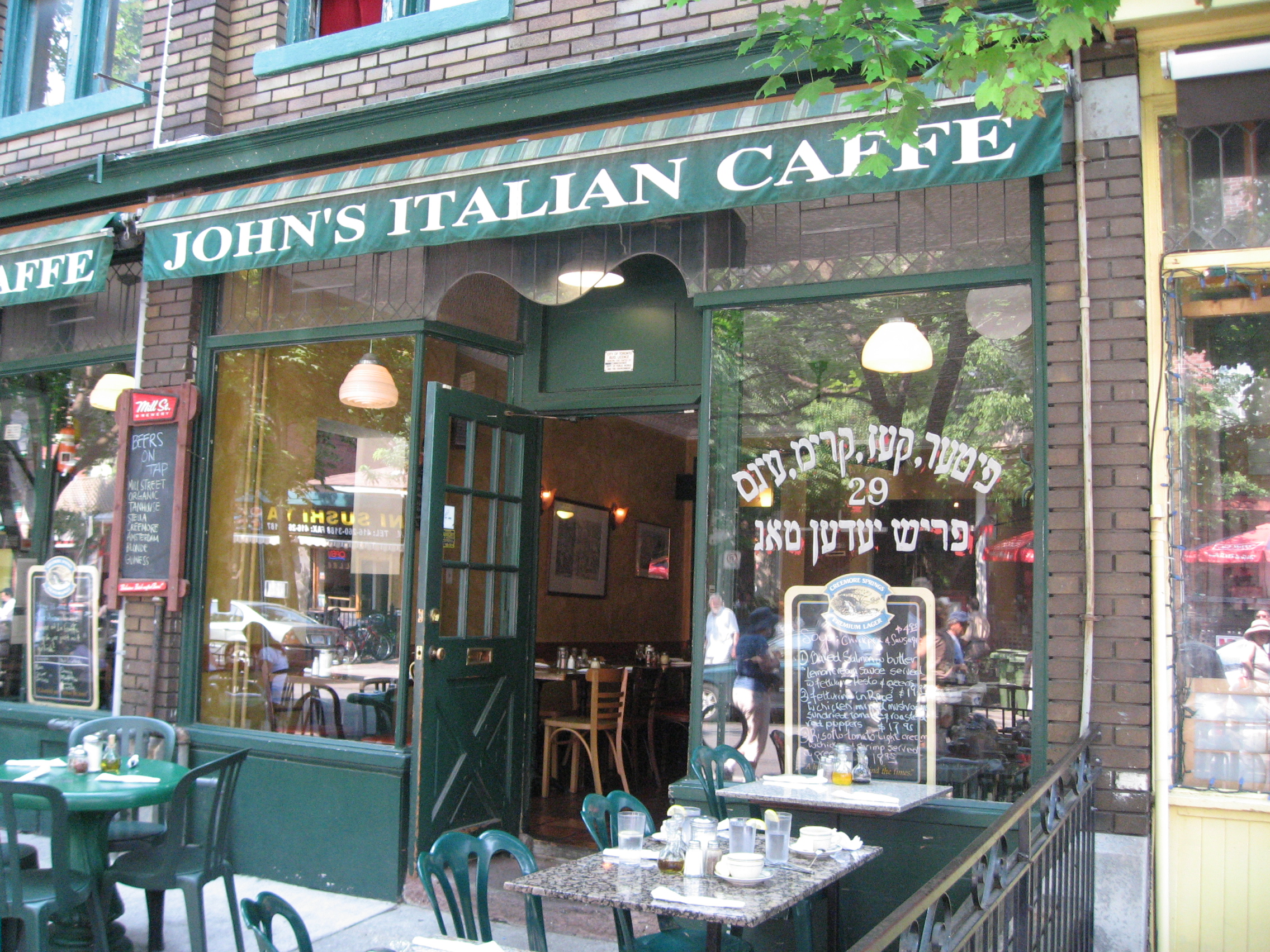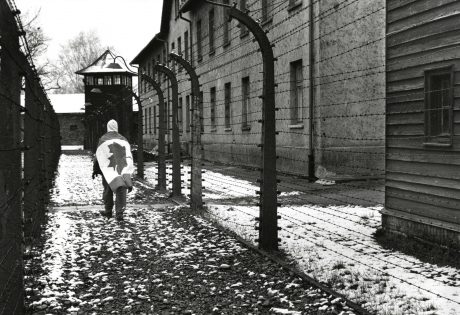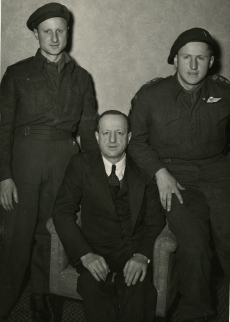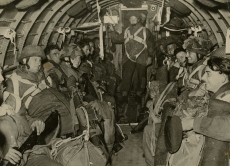Mandel's Creamery Window

For close to 100 years, the hand-painted Yiddish writing from Mandel's Creamery at 29 Baldwin Street advertised "..Eggs, cheese, cream cheese, made fresh everyday...".
Unless swift action is taken, this historic sign - and a very real and visible connection to the past - will be gone from this once vibrant Jewish neighbourhood.
In the collections of the Ontario Jewish Archives, Blankenstein Heritage Centre (OJA), the sign appears in the backdrop of a number of photos through the decades. The window is a regular stop on the OJA's "Sense of Spadina" Walking Tour, an opportunity to see the the last remnant of Yiddish in this former Jewish neighbourhood that teemed with butcher shops, cafes, labour union offices, and community buildings - where Yiddish was the predominant language on the street.
Though Mandel’s Creamery closed in the late 1970s, John's Italian Caffe, a charming “checkered-tablecloth-red-sauce" restaurant protected the Yiddish writing, integrating it into its identity. In the summer, patio patrons ate Margheritta pizzas in front of the Yiddish writing - a beautiful co-mingling of cultures across time.
When the OJA learned that John's Italian Caffe had sold to new owners, efforts were made to reach out to them, but were unsuccessful. On July 2, we heard that the Yiddish writing had been scraped off. Fortunately, this was not so. It appears that the writing remains on the glass, hopefully sandwiched safely between a window-covering sticker advertising the coming of the new business, a Taiwan-style tea shop called FormoCha.
The OJA is making efforts to reach out to the new owners in an effort to preserve the sign in the current location. If they are not interested in keeping the Yiddish writing on the glass, the OJA will raise money to have the window removed, preserved and, hopefully, re-installed in a public monument.
As OJA's mandate is to collect, preserve and make accessible the documentary resources of the Jewish communities across Ontario - it is incumbent upon us to preserve this sign.
We need help to do that. We hope you will help us protect this window. There are two things we are asking.
1. Share this blog post through social media using #MandelsCreamery.
2. Help us financially to continue our efforts to preserve our local Jewish heritage through efforts like this. Donate online.
If you have questions about how else to get involved, please contact me directly ojainquiries@ujafed.org.

![Passover Seder at Fort Brady (Sault Ste. Marie, Michigan), [ca. 1942]. Ontario Jewish Archives, item 4819. Passover Seder at Fort Brady (Sault Ste. Marie, Michigan), [ca. 1942]. Ontario Jewish Archives, item 4819.](https://ontariojewisharchives.org/cms_uploads/images/4819-copy2.jpg) There are a number of photographs of large-scale Seders organized for Jewish servicemen and women during the Second World War. This photo is from a Seder held at Fort Brady military base in Sault Ste. Marie, Michigan in 1942. It was attended by military personnel from both the United States and Canada and Rabbi Fishman of Congregation Beth Jacob in Sault Ste. Marie, Ontario led the Seder. Canadian Winston Rubinoff attends a 1943 Seder for army personnel at the Balfour Club near Trafalgar Square in London, England. There are also photographs of a Seder in Prince George, British Columbia on April 3, 1944, also for military personnel.
There are a number of photographs of large-scale Seders organized for Jewish servicemen and women during the Second World War. This photo is from a Seder held at Fort Brady military base in Sault Ste. Marie, Michigan in 1942. It was attended by military personnel from both the United States and Canada and Rabbi Fishman of Congregation Beth Jacob in Sault Ste. Marie, Ontario led the Seder. Canadian Winston Rubinoff attends a 1943 Seder for army personnel at the Balfour Club near Trafalgar Square in London, England. There are also photographs of a Seder in Prince George, British Columbia on April 3, 1944, also for military personnel.
